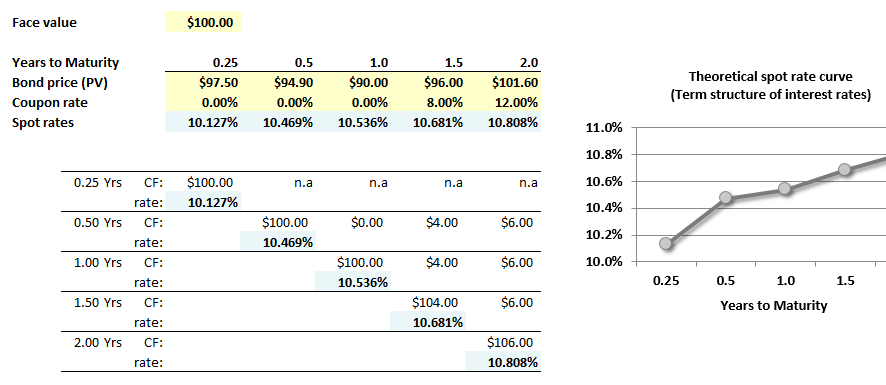laurel akin
New Member
I am so sorry to bother you but I really need help. Note: I am new to bonds, interest rates, forward rates .. etc.
In many examples ( for instance in Hull's book) I see something like this:
TTM Coupon Price
0.25 0 97.5
0.50 0 94.9
1.00 0 90.0
1.50 8 96.0
2.00 12 101.6
My question is ( i am a newbie): How do we know the price and the coupon rate of 1.5-year note? (As far as I know there is no 1.5-year bond in the US. ). Do we calculate this? (also 2.5, 3.5 .....)
I will be very grateful if somebody explains this to me.
In many examples ( for instance in Hull's book) I see something like this:
TTM Coupon Price
0.25 0 97.5
0.50 0 94.9
1.00 0 90.0
1.50 8 96.0
2.00 12 101.6
My question is ( i am a newbie): How do we know the price and the coupon rate of 1.5-year note? (As far as I know there is no 1.5-year bond in the US. ). Do we calculate this? (also 2.5, 3.5 .....)
I will be very grateful if somebody explains this to me.


 (it gives me and Nicole a break from trying to translate Stulz writing into plain English
(it gives me and Nicole a break from trying to translate Stulz writing into plain English  ). As we are updating the Hull notes, I just recently revised this exhibit (I combined Table 4.3 and Table 4.4 below). Do you have Excel? If so, here is the sheet:
). As we are updating the Hull notes, I just recently revised this exhibit (I combined Table 4.3 and Table 4.4 below). Do you have Excel? If so, here is the sheet: 